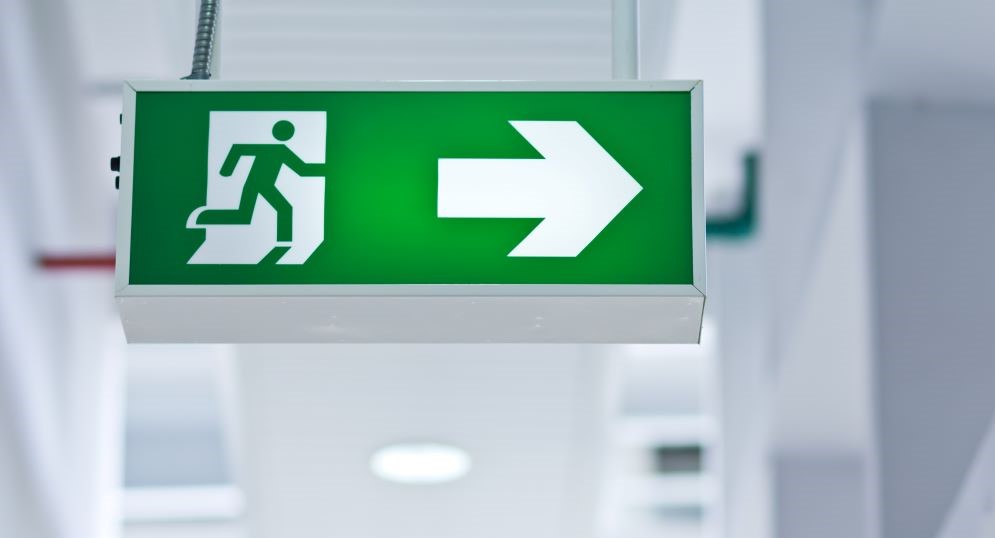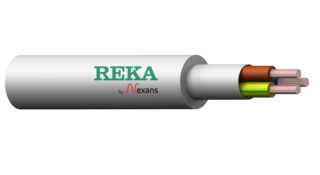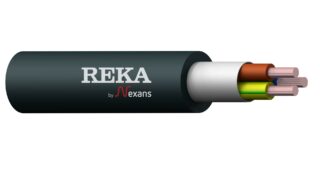A halogen-free cable protects people and property

A halogen-free cable protects people and property
PVC (polyvinyl chloride) is a widely used material in the insulation and coatings of electrical cables. However, its use poses risks in the event of a fire. Halogen-free cables have been developed to mitigate these risks, making them a significantly more responsible choice.
“By choosing a fire-safe cable, you can protect people and even save lives. Halogen-free cables allow for more evacuation time in the event of a fire compared to PVC cables,” says Product Manager Marko Mäkelä from Reka Cables.
The time available to escape a fire is often only a few minutes. In a fire, the difference between PVC and halogen-free cables can be critical.
“Halogen-free cables reduce the development of black smoke in the event of a fire, making evacuation much faster. With better visibility and less harmful smoke, it’s easier to find the exit quickly,” Mäkelä continues.
Halogen-free cables are suitable for use in all environments, including residential spaces, hospitals, and airports.
Anticipate and reduce property risks
Choosing halogen-free cables can also save money. In the event of a fire, the harmful acidic gases from PVC cables are avoided, which can damage machinery, computers, electronics, and furnishings.
“In terms of business operations, this approach can also prevent prolonged production interruptions, which lead to significant financial losses,” Mäkelä explains.
A PVC-free future
Sustainability is an integral part of modern business, and offering halogen-free cables is increasingly seen as a responsibility issue. In the Nordic countries, for instance, Sweden and Denmark have already transitioned to using halogen-free cables, and Norway and Finland are following suit.
“In Finland, the use of PVC cables is now largely a matter of habit. Most fire-resistant halogen-free cables are no longer significantly different from PVC cables in terms of handling, and there’s little price difference,” says Mika Mutru, Head of Product Development at Reka Cables.
Environmental impact
Halogens are chemical elements that include fluorine, chlorine, bromine, iodine, and astatine. They belong to group 17 in the periodic table and are found in many chemical compounds. For instance, chlorine is present in polyvinyl chloride, commonly known as PVC.
Both PVC cables and halogen-free cables have their own environmental impact.
“The often slightly lighter structure of halogen-free cables can reduce their environmental footprint compared to PVC cables. However, from a fire safety perspective, halogen-free cables are safer and thus a clearly more responsible choice than PVC,” says Kari Ingalsuo, Head of Quality and Sustainability at Reka Cables.
Watch the video on hazardous black smoke
In the event of a fire, PVC cables produce dense black smoke and toxic gases, making evacuation and rescue operations more difficult.
EQQ LiteRex – flame-retardant halogen-free installation cable
The Finnish-made EQQ LiteRex is highly fire-safe thanks to its halogen-free composition. EQQ LiteRex is a fully UV-protected, halogen-free, and flame-retardant installation cable in CPR class Dca-s2,d2,a2.
EQQ LiteRex has been designed with the installer in mind, and at the 2024 Electrical Fair, it received praise for its excellent handling.
Note: In 2024, EQQ LiteRex was registered in the PEP ecopassport database! The Product Environmental Profile (PEP) life cycle assessment of EQQ LiteRex is available on our website.
Explore EQQ LiteRex and its PEP life cycle assessment here.
Sustainable and responsibly produced quality
All Reka by Nexans products carry the Key Flag symbol, a mark of Finnish work. By choosing a product with the Key Flag, you know you’re getting a responsibly produced, high-quality product or service.

